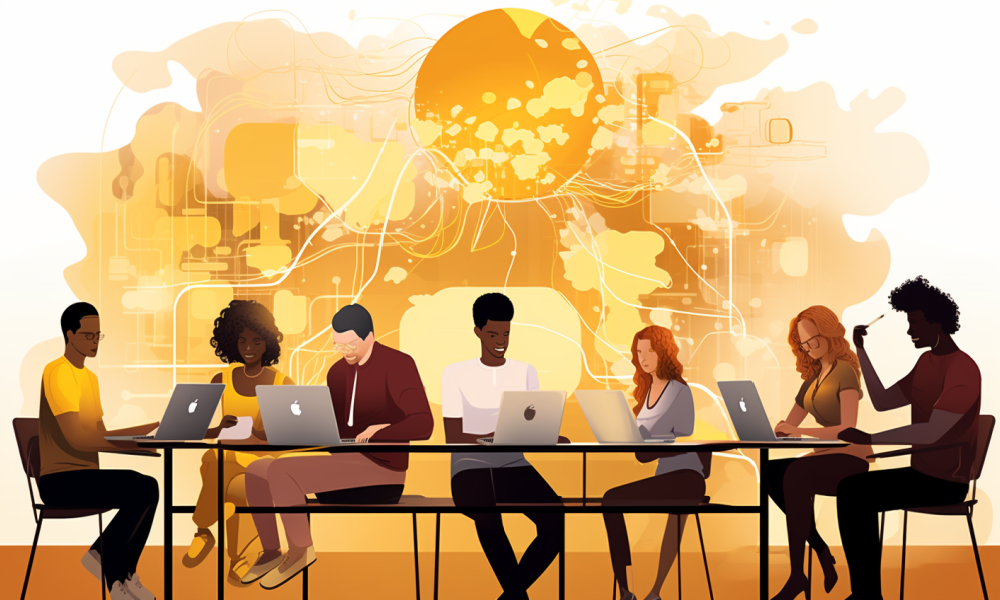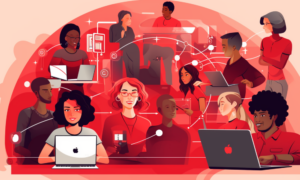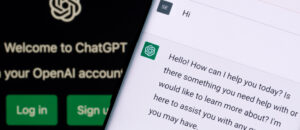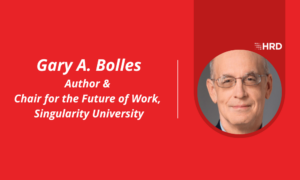How generative AI will impact the workplace
- 6 Min Read
The potential of Generative AI to allow companies to ideate and innovate faster will be revolutionary for all industries
- Author: HRD Connect
- Date published: Jul 13, 2023
- Categories

Back in 1997, as many office workers around the world were just starting to learn how to use desktop computers to carry out such tasks as writing a letter or filling out a spreadsheet, Microsoft launched an early version of a digital assistant that was intended to enable a seamless transition into a new technological age.
Taking the form of an anthropomorphic paperclip called Clippit – or Clippy as it would go on to be known – the application would pop up in the bottom right-hand corner of the screen and interject with such phrases as, “It looks like you’re writing a letter…would you like some help?”
Upon its appearance, users could accept the offer of assistance, decline it on that occasion, or temporarily consign Clippy to obscurity by ticking the box marked, ‘don’t show me this tip again.’
As things turned out, it was the latter option that proved to be the greatest boost to office-based efficiency, as, despite the good intentions that lay behind its development, Clippy proved far more adept at annoying and angering its users than assisting them.
Ultimately, this led to it being chosen as one of the 50 worst inventions in the world by Time magazine in 2010. But, as much as its implementation proved to be an abject failure, its initial inspiration: to provide a digital aid in carrying out such tasks, retains as much potential in the workplace of today as it did in the 1990’s.
A new age of artificial intelligence
The recent development of generative AI systems that can not only recognise and analyse data which is fed into it, but also interpret it and produce outputs such as text, images and computer code that are based on that data, has brought that potential much closer to being realised.
In the case of Open AI’s ChatGPT system, which Microsoft recently announced that it would commit $10 billion of investment towards, this potential has already been proven by the fact that it can: complete and receive a passing grade for a final year MBA examination; write complex computer code in multiple programming languages; and extract figures from vast amounts of data at speeds a human being could only dream of.
For companies and their employees, this processing speed and ability to manage complex tasks, offers an exciting opportunity to drastically increase both efficiency and productivity.
For instance, by automating or at least drastically reducing the time and resources dedicated to the generation of emails, reports and presentations through such systems, the capacity of staff to refocus their efforts where they are best employed would be hugely increased.
Similarly, the prospect of using it to analyse existing data and workflows within an organisation and identify real opportunities for improvement could be used to improve decision-making and deliver better outcomes.
And its unique ability to recognise patterns within data sets, no matter how sizeable, could be used to rapidly identify potentials trends within market research or internal customer data to quickly identify potential trends or anomalies that could lead to valuable, and actionable insights.
Speaking to HRD Connect, Lee Arthur, CEO of the digital training and learning platform Avado, explains that initially, companies and organisations looking to take advantage of such technology are likely to see the benefits on an individual level.
“People will naturally start with the evolution, so completing existing workflows by asking such a system to summarize an email, complete a spreadsheet table or write a piece of code,” he says.
Accelerating innovation and ideation
But far more significant than those initial wins would be the potential productivity gains that would be delivered by its adoption across a whole business because of smarter operations between different units and departments.
“Interfaces between departments and customers usually cause the most friction and wastage, but having generative process automation (GPA) rather than robotic process automation could hugely improve the efficiency of workflows through an organisation,” he says.
An example of how this functionality might prove immediately applicable would be the technology’s ability to help in arranging team meetings, generating agendas, and tracking progress so that those working on a given project or product are focused almost entirely on the overall objectives rather than the administrative aspects of it.
Ultimately, this is what Arthur sees as the greatest opportunity offered by the technology, with companies transforming how they function and operate.
“The greatest potential is the ability to ideate and innovate faster, to be able to produce real applications within hours instead of months and demand tested in days and meaning that the product launch process can be massively accelerated.”
Balancing the opportunities against the risks
But as much as generative AI offers huge opportunities, it will also present significant challenges.
Causing particular concern is what such capabilities and the speed and quality at which they are carried out might mean for existing job roles and responsibilities.
As increasing amounts of work and processes become fully or partially automated, where would that leave those who were previously charged with carrying them out?
On this issue, it appears almost certain that the nature of job roles and responsibilities would change because of the technology’s adoption.
But much like the widespread adoption of many other disruptive technologies, including the computer itself, those at risk would also have an opportunity to adapt.
For all that automation could reduce the need for certain tasks to be carried out, it could also create the opportunity for new types of jobs to be in-demand.
Indeed, as generative AI systems become more widespread, job roles directly related to its development, deployment and operation would become increasingly important and create a clear opportunity for those already present at the time of its adoption to upskill and reskill themselves so that they are well placed to capitalise on it.
Equally, as the technology is more widely adopted and its potential application is better understood, the scope for it to be used in ways that will lead to the creation of new generative AI-empowered roles will increase.
To be best placed to take advantage of such roles, there will almost certainly be an increased requirement for key skills such as digital literacy and data analysis within a more AI-driven workplace.
But as Arthur, who has already witnessed the potential that the technology holds for Avado, both internally in terms of productivity and as a tool in the digital learning environment, explains, the most important thing that companies can do to prepare for the transition, is to move quickly.
“Get staff excited and get them wanting to join in and skill up. Launch AI labs that are open to all and tell them not to wait and ask for permission and bring in teams that the opportunity with the risk without creating the fear to try.”
Avado Fast Future’s launched the UK’s first Generative AI training in February 2023. To find out more, click here:









